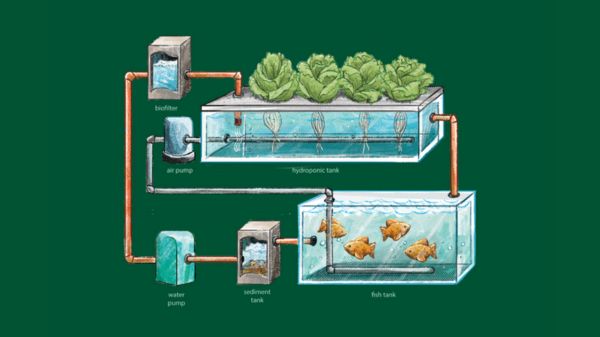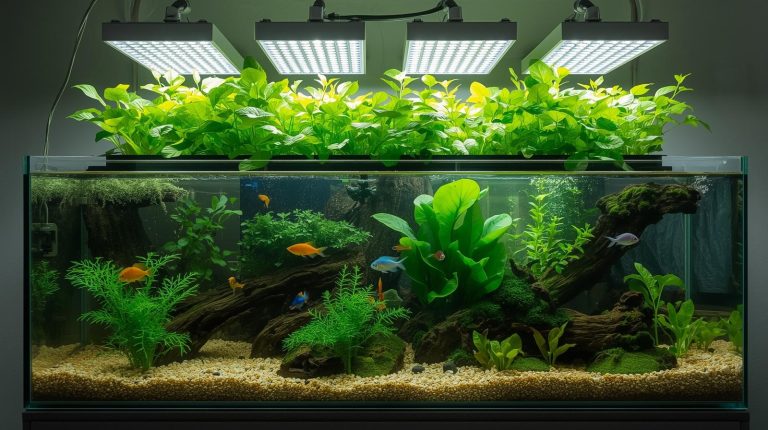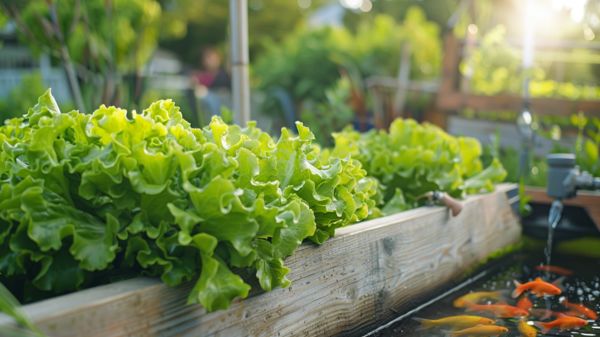Plunge your hands into the soil of modern gardening, and you’ll find the roots of hydroponics and aquaponics—a blend of ancient wisdom and cutting-edge technology.
As you embark on this journey, you’re not just growing plants and fish; you’re cultivating a community of like-minded pioneers who share your passion for sustainable living.
This guide is your companion, walking you through the process of setting up your own system. You’ll learn the essentials, from choosing the right model to understanding the key components that make your garden thrive.
With each step, you’ll gain the confidence to maintain and troubleshoot your setup, ensuring a bountiful harvest. So roll up your sleeves and let’s dive into the world of DIY hydroponics and aquaponics, where you’ll grow more than just food—you’ll grow a sense of belonging.

Understanding Hydroponics Basics
Hydroponics allows you to grow plants without soil by using a nutrient-rich water solution instead. This method isn’t only efficient but also creates a sense of community among enthusiasts. As you delve into hydroponics, you’ll find various system designs tailored to fit different spaces and preferences. The water circulation is critical, ensuring that your plants receive the essential nutrients they need to thrive.
Transitioning from hydroponics, aquaponics introduces a symbiotic environment where plants and fish coexist. Fish waste provides an organic nutrient source for the plants, while the plants clean the water for the fish. Understanding the types of aquaponics systems is key to establishing a successful garden that fosters a connection with nature and fellow gardeners.
Choosing Your Aquaponics Model
As you consider diving into aquaponics, it’s crucial to select a system model that aligns with your space constraints and personal preferences. Whether you’re setting up in a cozy corner indoors or spreading out in a backyard greenhouse, the right aquaponic system ensures a harmonious balance between plants and fish.
Explore options like the Nutrient Film Technique, where a thin stream of water enriches roots, or the Deep Water Culture, which allows roots to bathe directly in the nutrient-rich fish tank water. If you prefer a solid growing medium, Media-based Aquaponics with a grow bed might be your match.
Essential System Components
Building your DIY aquaponics system starts with understanding its essential components, which include both living elements and hardware crucial for creating a balanced ecosystem. Your aquaponic gardening system hinges on a synergistic relationship between fish farming and plants growing.
When setting up your aquaponics, consider the type of fish that thrive within a specific pH range and how their waste contributes to nitrate levels, vital for plant nutrition.
Incorporate a water pump and plumbing to circulate nutrients, and an air pump with air stones to oxygenate the water. Select a growing technique, like the Nutrient Film Technique (NFT), suitable for your space and goals.
Step-by-Step Setup Process
Now that you’ve gathered your system’s essential components, let’s dive into the step-by-step setup process to get your DIY aquaponics system up and running.
First, assemble your small DIY aquaponics system in a location that accommodates the ins and outs of aquaponic gardening, considering factors like light and humidity. Establish your tanks and grow beds, ensuring a stable setup for the mutually beneficial relationship between fish and plants.
Next, install the pump system, which is critical for moving water and nutrients to the growing plants. Introduce your chosen fish into the tank—remember, when choosing fish, consider species that thrive in your system’s environment.
Finally, plant the seeds or seedlings in the grow beds, where the plants are grown using the nutrients provided by the fish waste. This step-by-step guide should have your aquaponics system flourishing in no time.
System Maintenance and Troubleshooting
You’ll ensure your garden’s longevity by mastering system upkeep and swiftly tackling any troubleshooting challenges that arise.
In aquaponic systems, it’s crucial to regularly filter the water and monitor pH levels, ensuring they’re optimal for your fish and plants. You’re not just growing food; you’re nurturing an ecosystem. Break down the fish food into manageable portions to prevent waste and potential fish diseases.
For troubleshooting, keep an eye on your water source. If you notice any changes, act fast. Algae growth or a sudden pH shift can signal an imbalance.
In both hydroponics and aquaponics, system maintenance is your gateway to a thriving garden. Address issues methodically, and you’ll cultivate not just plants, but also a sense of accomplishment and belonging in your gardening community.
Conclusion
You’re now equipped with the essentials to start your own hydroponics or aquaponics adventure. With the right setup and maintenance know-how, you’ll efficiently grow fresh produce in no time.
Remember, choosing the system that suits your space and goals is key. Don’t hesitate to refer back to these steps for troubleshooting. Dive in, keep learning, and enjoy the fruits (and veggies) of your labor!




